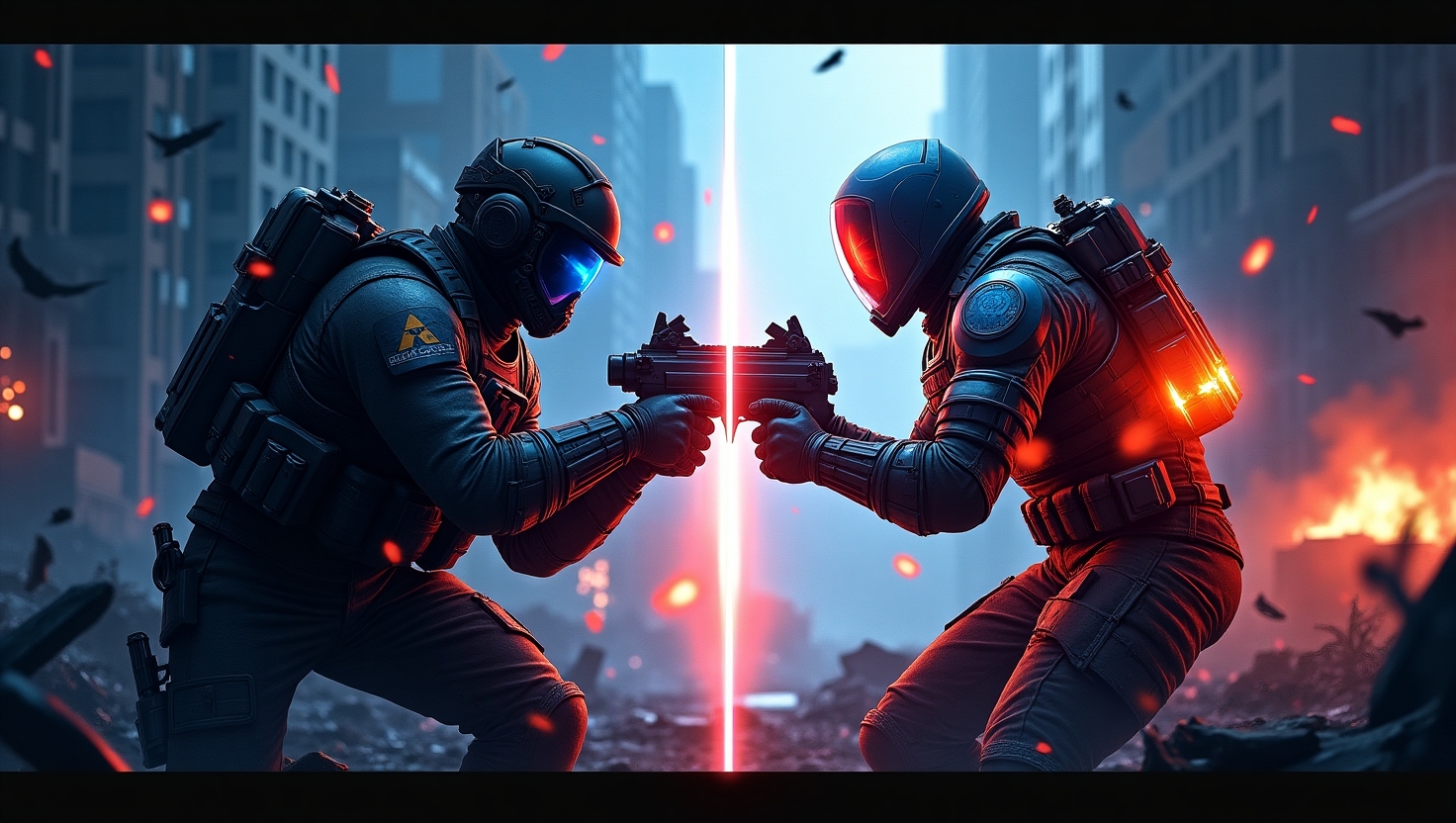The Epic Call of Duty and Battlefield Rivalry: A Deep Dive into FPS Games
Introduction to the Call of Duty and Battlefield Rivalry
The clash between Call of Duty and Battlefield is akin to a heavyweight boxing match in the world of FPS games—a relentless battle for dominance in an arena crowded with contenders. This rivalry has shaped gaming history and left an indelible mark on modern gaming culture. First-person shooter (FPS) games hold the pulse of player engagement, and both franchises have continued to push the envelope in terms of innovation and fan engagement. This article explores the intertwined destinies of these titan franchises, unraveling the narratives of how they have influenced each other and captured the fervor of gamers worldwide.
A Historical Perspective: The Evolution of FPS Games
To understand the Call of Duty Battlefield rivalry, one must traverse the timeline of FPS game evolution. The roots of this rivalry date back to the release of Battlefield 1942 in 2002, followed closely by the original Call of Duty in 2003. These releases set the stage for a fierce competition that has evolved over several decades source.
In the early 2000s, gaming trends leaned toward realistic war simulations, with graphics and gameplay becoming increasingly immersive. The release of Call of Duty 4: Modern Warfare was a watershed moment, not only for the franchise but for modern video games as a whole—it revolutionized game design, offering cinematic single-player campaigns and adrenaline-fueled multiplayer modes that became industry standards. Meanwhile, Battlefield 1, with its foray into the lesser-explored theaters of World War I, showcased DICE’s ambition to break new ground with innovative storytelling and responsive gameplay.
Key Players: Activision vs. EA and Their Strategies
Behind these monumental franchises are the industry giants: Activision, EA, and their seasoned developers—Infinity Ward, Sledgehammer Games, Treyarch, and DICE. Activision’s strategy with Call of Duty has been aggressive, focusing on yearly releases that retain core gameplay mechanics while introducing enough novelties to keep the fan base engaged. Each installment attempts to perfect the formula with improved visuals, tighter controls, and more explosive set pieces.
Conversely, EA and DICE have often taken a broader approach with the Battlefield series, aiming to capture the scale of warfare through massive maps, vehicle combat, and strategic team play. This strategy embodies the franchise’s commitment to realism and expansive gameplay, catering to a niche yet devoted audience source.
Innovative Game Design: What Sets Them Apart?
The distinct differences in the gameplay mechanics and design choices between Call of Duty and Battlefield are where the rivalry truly crystallizes. Call of Duty is often reminiscent of a fast-paced action film, with a focus on quick reflexes and close-quarters combat. Each release, including recent titles, maintains its roots in kinetic energy and high-octane action.
In stark contrast, Battlefield games immerse players in sprawling battlefields that require strategic planning and teamwork, akin to a military operation rather than a theatrical firefight. Battlefield 1 exemplifies this with its unique take on World War I, using historically accurate locations and weapons that transport players back in time, diverging significantly from Call of Duty’s modern themes.
The Role of Community and Market Trends
In today’s gaming landscape, the power of community cannot be overstated. Both franchises have leveraged vast player bases to refine game development and release schedules. Community feedback often dictates changes, as seen with Battlefield’s focus on expanding online multiplayer modes in response to Call of Duty’s popular multiplayer offerings.
Market trends have also played a crucial role. The demand for more complex, graphically enhanced games has pushed both franchises to continually upgrade their engines and introduce groundbreaking features that redefine player expectations.
Current State of the Rivalry and Future Outlook
As the rivalry endures, both franchises have strategically placed their pieces on the board with recent releases. While Call of Duty continues to lead with its successful integration of battle royale elements in Warzone, Battlefield aims to recapture its audience with innovative approaches and robust multiplayer experiences.
Looking toward the future, this competition is poised to shape the next generation of FPS games. Advances in virtual reality and AI stand to revolutionize player engagement, offering unprecedented levels of immersion and realism. Both franchises will undoubtedly be at the forefront of these innovations, driving each other to achieve greater heights in game design evolution.
Conclusion: Final Thoughts on the Call of Duty and Battlefield Rivalry
The rivalry between Call of Duty and Battlefield is more than just a competition for sales—it’s a battle for player loyalty and the soul of the FPS genre. Each franchise has carved its niche in gaming history, but their intertwined destinies continue to drive innovation in the industry. As this rivalry forges ahead into uncharted territories of gaming history and technology, players worldwide remain on the edge—the next round of this epic showdown is sure to redefine what we know about first-person shooters.
References and Further Reading
For a comprehensive look into the Call of Duty and Battlefield rivalry, you can check out the detailed article on IGN. This source provides in-depth insights into the franchises’ impact on FPS gaming and gaming history.

